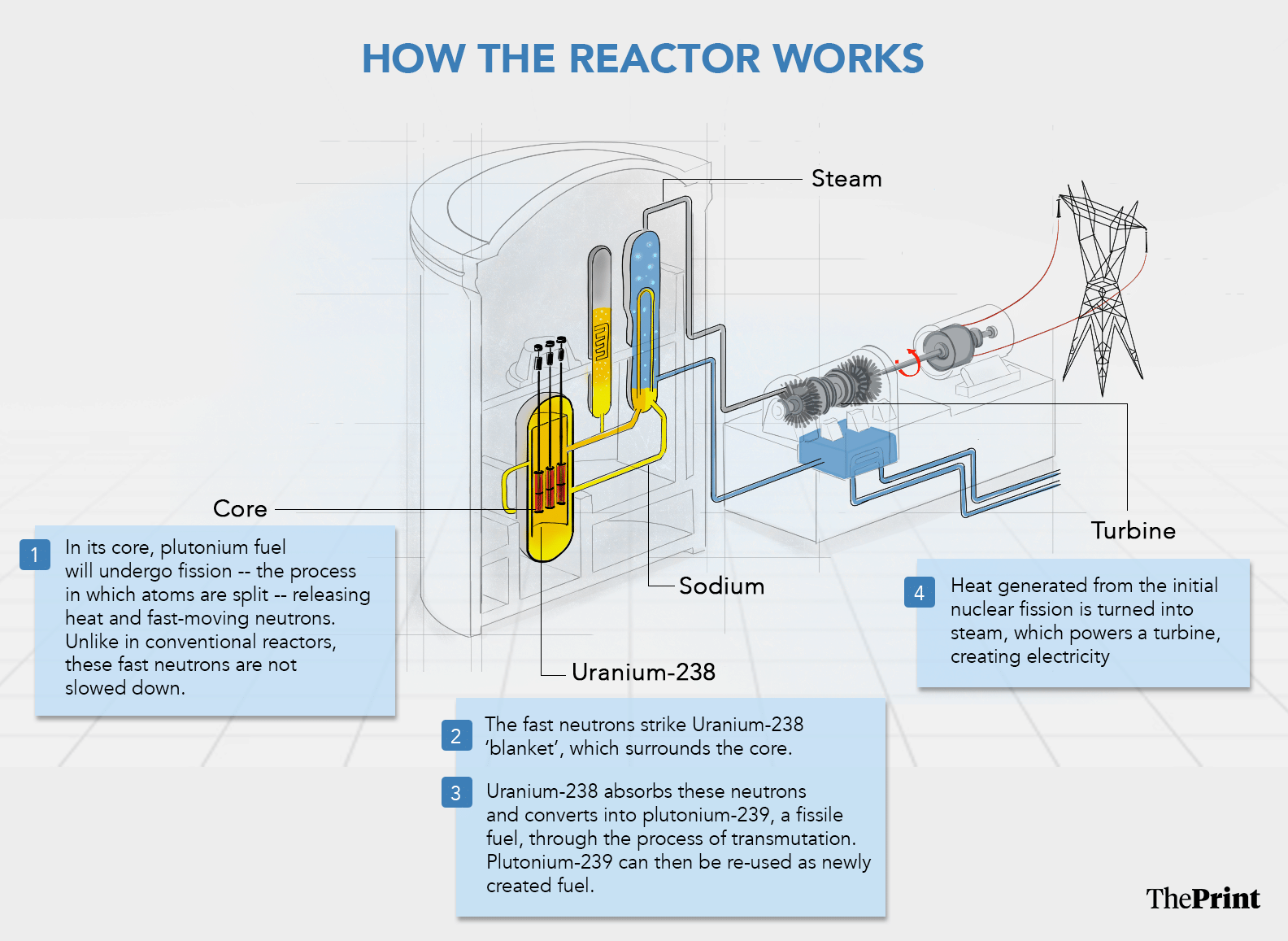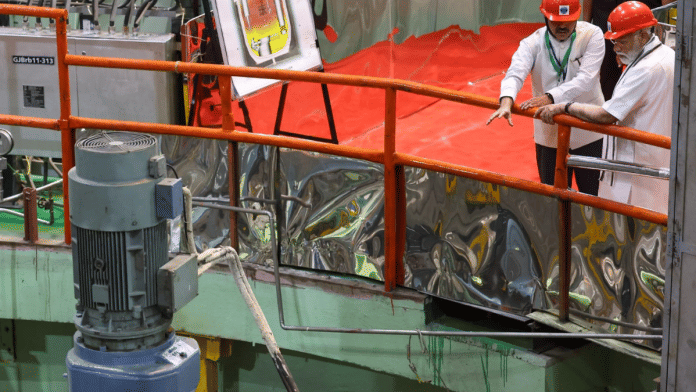New Delhi: The 500 Mwe-Prototype Fast Breeder Reactor (PFBR) in Tamil Nadu’s Kalpakkam is expected to achieve first criticality within six months, marking a key step towards India’s energy independence.
With fuel-loading nearly complete, India is on track to become the second country after Russia to operate a fast breeder reactor.
Apart from its energy output, the enormous amount of fissile material produced by the reactor will also have significant strategic value.
The PFBR in Kalpakkam began receiving fuel on 18 October after the Atomic Energy Regulatory Board (AERB) granted permission this month.
Senior officials of the Department of Atomic Energy (DAE) told ThePrint the reactor will reach its first stage of criticality—a self-sustaining fission chain reaction at a controlled and constant rate—within six months. It is expected to be completed by 2026-end, more than two decades after work on the nearly Rs 7,600-crore project began in 2004.
“This is a historic moment for India’s clean energy future. It is a leap in AI-powered, self-reliant nuclear tech,” said R.K. Singh, former scientist at DAE.
Strategic importance
In the years leading up to India’s official nuclear agreement with the US, there was immense international pressure on India to place the PFBR and its breeder programme entirely under the International Atomic Energy Agency (IAEA) safeguards.
This would have committed India not to use plutonium diverted from the plant for military purposes. India did not budge: the government chose to keep the PFBR unsafeguarded so the reactor could also serve strategic needs.
The DAE, headed at the time by secretary Anil Kakodkar, said PFBR technology was designed to breed more fissile material than it consumes, making it dual-purpose. While its primary role was civilian power generation, the plutonium produced in its uranium blankets could also be used to make nuclear weapons.
An article published in the journal Science and Global Security in 2007 estimated that this facility could produce up to 140 kg of weapon-grade plutonium per year. That figure was calculated using neutronics for a detailed three-dimensional model of the reactor.
“India’s large stockpile of separated reactor-grade plutonium from its unsafeguarded spent heavy-water reactor fuel could serve as makeup fuel to allow such diversion of the weapon-grade plutonium from the blankets of the fast breeder reactor,” the article read.
How is this technology different?
A fast breeder reactor generates or ‘breeds’ more nuclear fuel than it consumes, making the process highly energy efficient and substantially reducing radioactive waste.
In PFBR, plutonium, fast neutrons and liquid sodium facilitate conversion of Uranium-238 into fissile material. This fissile material—elements that can be used as fuel for nuclear reactions—can then be utilised again.
Unlike conventional nuclear reactors that use water, PFBR uses liquid sodium as a coolant because it doesn’t slow down ‘fast neutrons’ and can efficiently transfer heat generated.

The thorium advantage
What also sets India’s PFBR apart will be its capability to eventually utilise thorium, a radioactive element abundantly available in the country.
The central government had said in a statement last year it aims to use thorium-232 as a ‘blanket’ around the core instead of uranium, reserves of which are limited.
The rest of the process to generate electricity will be similar, with thorium being used to create more fissile material, which can then be directed towards other nuclear reactors. In this manner, India will be able to re-use already spent nuclear fuel.
“By transmutation, thorium will create fissile uranium-233, which will be used as fuel in the third stage (of India’s nuclear programme). FBR (Fast breeding reactor) is thus a stepping stone… paving the way for the eventual full utilisation of India’s abundant thorium reserves,” the statement had said.
Earlier this year, Centre had launched the Nuclear Energy Mission for Viksit Bharat, which aims to scale India’s nuclear power capacity to 100GW by 2047. Currently, India’s capacity is just about 8.18 GW.
Also Read: Why a US firm’s thorium fuel breakthrough is significant for India
Development
Construction of PFBR began in 2004, but missed several operational deadlines.
DAE officials told ThePrint that unique challenges during the commissioning stage caused setbacks in the initial stages, including technical issues with using the sodium coolant, technology procurement problems and delays in budget sanctions.
“The problems were resolved, and now, work is advancing at a satisfactory pace,” an official said.
Safety and waste management
Officials said safety is paramount. PFBR incorporates passive safety features such as prompt and safe shutdown in case of an emergency and protection against sodium leak.
A major advantage of this reactor is its use of spent fuel, which would reduce the amount of waste generated and eliminate the need for separate land to dispose of radioactive material.
“Nuclear energy is the way forward and the world is working towards that direction. This reactor will be a major push towards self-reliance in India’s nuclear energy programme,” a DAE official said.
(Edited by Prerna Madan)
Also Read: This Bengaluru startup’s leading India’s nuclear fusion research—to light up a billion homes






